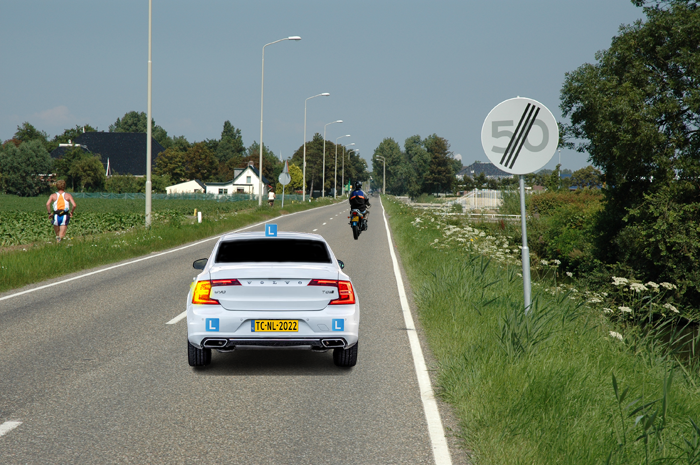Overtake safely

You should check in good time whether you can overtake safely.
Look far forward to observe any side streets, obstacles or parked cars, for example.
Then look in your rear-view mirror and left wing mirror and as next, check the blind spot. If you can overtake safely, then signal to the left and start moving sideways.
The moment you complete the lateral movement, switch off the indicator.
After you have finished overtaking and want to return to the right, you look again in your rear-view mirror and right wing mirror and check the blind spot. You signal to the right and go back to the right. Try to keep the overtaking manoeuvre as short as possible.
Start the overtaking manoeuvre in good time. That is, don’t start by driving close behind the vehicle in front of you. When you notice that your distance to the vehicle in front starts to get smaller, start checking what overtaking opportunities are available.
Lateral distance when overtaking.
When overtaking another vehicle, you should keep as much lateral distance from that vehicle as possible. You should not drive right past the vehicle you are overtaking with your right wing mirror.
Especially when overtaking cyclists, mopeds or motorbikes, you need to keep a lot of distance. These are balance vehicles and are still willing to deviate from their straight line. Especially in strong winds, or when avoiding puddles on the road. Keep at least one and a half meters lateral distance when overtaking two-wheeled vehicles. Within built-up areas, the advice is to keep at least one meter sideways distance from cyclists. This is too little in many situations, in which case choose to keep at least one and a half meters lateral distance.
